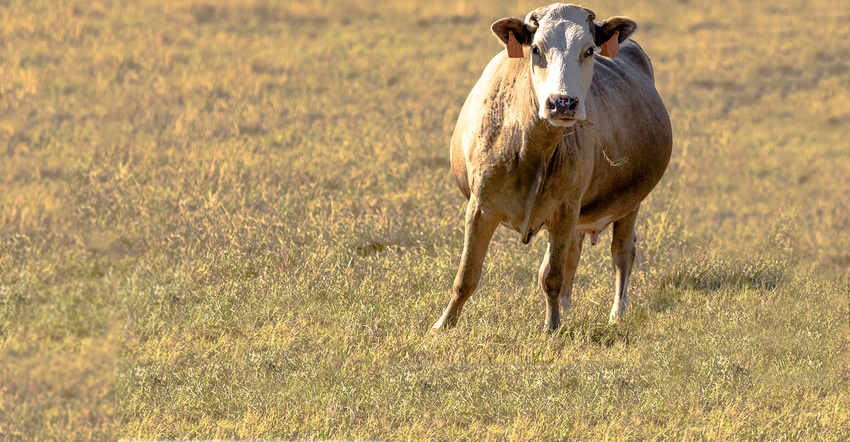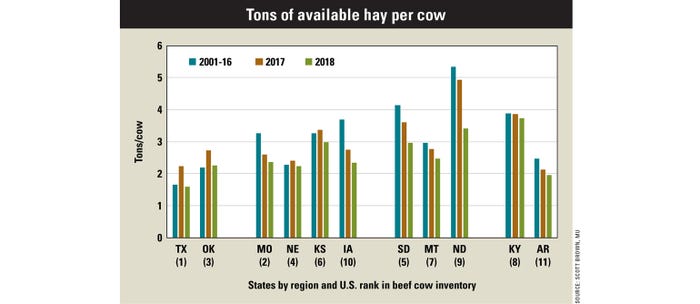March 6, 2018

By Scott Brown
A larger percentage of land and pastures are too dry relative to last year.
For the first few weeks of 2018, about 36% of U.S. land has been classified as enduring moderate drought or worse, according to the U.S. Drought Monitor. This compares to 16% at the same time last year. Stocks of hay are also down sharply. The Dec. 1, 2017, hay stock inventory of 86.2 million tons was down 10% from one year earlier. Will these conditions affect beef cow inventories in 2018?
Deciphering drought data
The first thing to note is that caution is always warranted with statistics “compared to a year ago.” While these are frequently quoted correctly, it is important to think about whether or not conditions were close to normal one year ago.
In terms of drought conditions, 2017 was one of the least affected years in quite a while. In fact, since drought monitor data began in 2000, the smallest amount of moderate drought or worse was recorded last May, when only 4.5% of the country was affected. The drought condition readings thus far in 2018 are only slightly above a longer-run U.S. average. Also, the hay stocks number in December 2016 was the largest in six years, and more than 27% higher than the 2012 figure.
It is also important to remember that drought conditions have extremely important regional ramifications that might not show up when looking at national data — particularly when it comes to a beef cow herd that is not distributed equally across the country. When drought is affecting certain areas and hay may need to be shipped in, how far are available hay supplies from the areas of greatest need?

Hay supply short
The graphic with this column makes an attempt to account for some of these issues by showing hay stocks relative to beef cow numbers for the top 11 beef cow inventory states. States are grouped according to geography, with the rank as measured by beef cow inventory placed below.
The first thing to note is that in the very important cow-calf areas of Texas and Oklahoma, hay stocks relative to cows are down sharply from one year ago, but very near a longer-run historical average. In other important cow-calf regions, stocks are down against longer-run history as well.
Drought conditions can change very quickly at this time of year, as spring storm systems develop. Some areas in the Lower Mississippi River Valley went from dry to flood in just a few days recently. But with pasture growth beginning or set to begin soon in many Southern states and drought conditions worsening in the Southern Plains in recent months, it is certainly a factor to watch as we move through spring and summer.
The economics of cow-calf production are projected to be roughly neutral regarding further cow herd growth this year. Therefore, the extent to which dry weather intensifies or is short-lived in important beef cow areas is likely to be the determining factor to whether we see a fifth consecutive year of beef cow expansion during 2018.
Brown is a livestock economist with the University of Missouri. He grew up on a diversified farm in northwest Missouri.
You May Also Like




